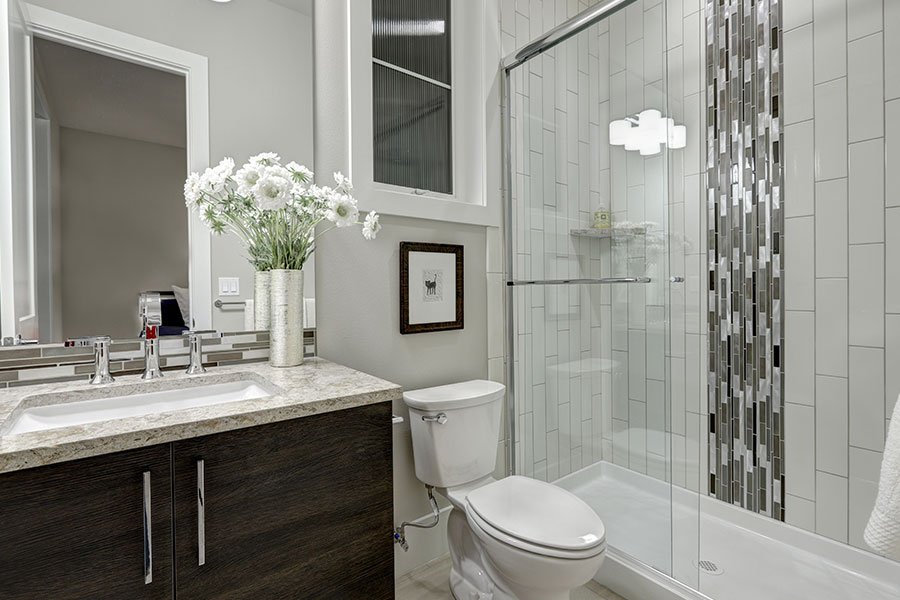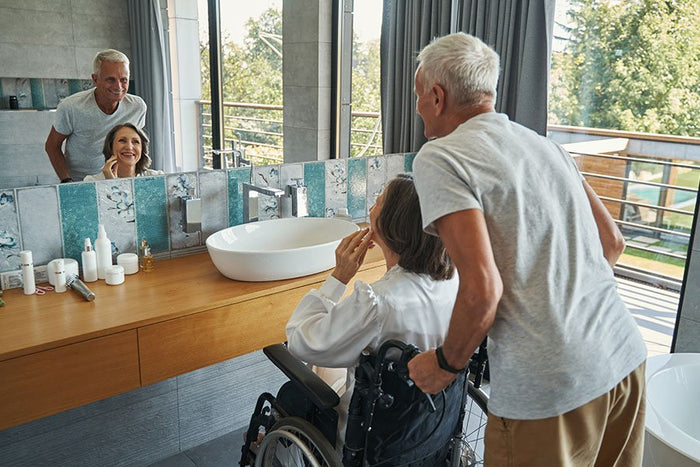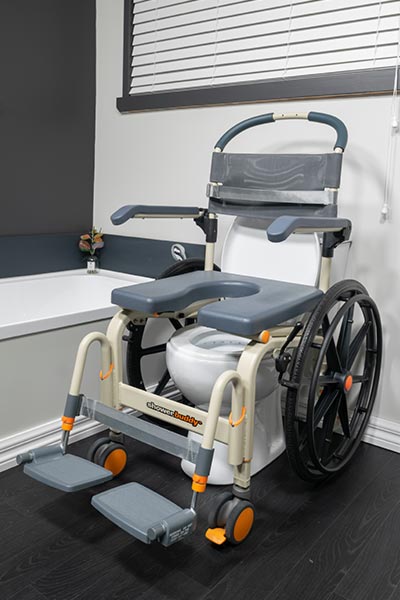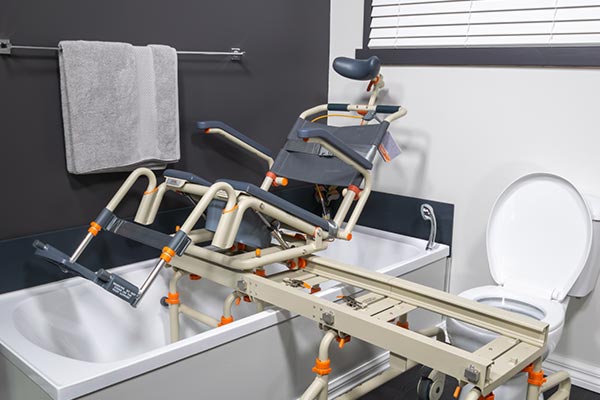-
It’s easy to take going to the bathroom for granted
-
Using the bathroom for anyone with full control and function of their body is just second nature.
We barely give it a second thought, taking our privacy and independence to complete our bathroom routine entirely for granted. For an elderly person who has enjoyed this freedom their whole life before suddenly being affected by a physical impairment from ageing or a condition, bathroom mobility is anything but a minor consideration.
The process of using the bathroom in a comfortable and dignified manner is a big part of millions of seniors across the globe each day. It’s a core part of an occupational therapy plan, and assistive technologies exist to help the process. It’s also a vital part to get right when it comes to an in-home aged carer – relying on another person for bathing and toileting needs to be approached carefully.
In this guide, we offer some insight into the process of bathroom mobility and the challenges it brings. This topic is something our team, our community of OTs and our users encounter every day. We continually talk to our community to understand what specific areas are most challenging, and find ways to build new features into our product range to best meet these needs. Read on to learn more about bathroom mobility for seniors and how you or your loved one can navigate the process easier.
3 Bathroom issues: to check out
-
![]()
-
1. The basin and mirror too high
A mirror may be placed at the perfect eye line for someone standing up straight, but for someone with a mobility impairment or a posture-effected elderly person, it may be difficult to properly use the mirror or basin. An important part of the bathroom routine, this issue can be a real hassle for residents.
There’s a few options you’ve got here. If the mirror is lightweight and not heavily affixed to the wall (such as a light, decorative mirror), it may be practical to simply remove and adjust the hanging point. The basin is not quite as simple, and for many bathrooms the mirror is affixed to the wall and/or vanity. In this case, you may wish to make use of a bathroom mobility system or raised seat that allows clearance of the edge of the vanity and visibility of the mirror for hand washing and other daily rituals.
2. The floor is slippery
Bathrooms are slippery environments, even within the most disciplined of households. A bath mat may provide some protection for part of the floor, but these in themselves can act as tripping hazards for elderly users. Tiles, lino or wooden floors all become very slippery during and after showering. It doesn’t take a splash of water either; the moisture from steam can leave a thin layer of water on the floor enough to up-end anyone who doesn’t take extreme care.
When mobility is reduced as it is for many seniors, the ability to steady oneself or correct body position during a slip is often gone. This unsurprisingly causes many falls, some of which can cause serious injury.
There’s a few ways around slippery floors. First, if the household has an aged carer to assist with bathing, they can ensure maximum ventilation as possible through extractor and open windows. This carer may also be able to wipe down surfaces with a towel. But these aren’t failsafe solutions, and during transfer, water will still likely end up on the flooring of the bathroom.
In our view, and in thousands of OTs, along with decades of product research behind us, the bathroom transfer system is the best option to reduce the chance of hazards. These systems contain high grade casters under a chair designed to provide substantial stability. These systems also remove one of the most hazardous movements in the bathroom – getting into and out of the shower. The user stays seated across the toilet, in the shower, transferring out and drying off. When a carer is involved in a heavy lifting motion, it takes a lot of manual effort and proper form to safely remove someone from a shower. With a shower transfer system, the carrying of the client is taken care of by the chair the whole time.
3. Visibility is poor or room is uncomfortably steamy
Actually seeing what you’re doing in the bathroom is important. If ageing has also brought with it a reduction in visual acuity, a dim or steamy room is just adding more potential for a trip or fall.
As part of getting the bathroom more equipped for a mobility impairment, make sure your extractor is fully operational and lighting has been updated with bright bulbs and fixture placement that gives an even, bright coverage across the room.
Keeping the window open and temperature to only a level that’s required is also a quick and free way to control the steam level.
How to help ensure comfort: when using the toilet
-
![]()
-
Toilet seat is too low to get down onto or off
Most standard toilets are built for kids and adults who have no problem with sitting and standing motions from a seat down at about knee-height. An elderly person with reduced mobility will find this manoeuvre very difficult in many cases as it requires legs, bending, back strength and a good command on one’s centre of gravity.
There’s a number of options to combat this. Low-cost toilet raisers can be found online or in your local homewares or mobility store fairly easily. While these might be okay for people with a low level of mobility impairment, they aren’t always perfect for the toilet, and won’t likely take the full brunt of a shifting weight distribution on the toilet. They also may not be the perfect height either, and fixing them securely to the toilet bowl can make them a hassle in a household where all different levels of mobility are using the same toilet throughout the day.
A preferable option would be a system that allows adjustable height, and fits over any toilet. It would also ideally remove the load off the toilet itself and spread this across a wider area in a unit that’s not fixed to the toilet itself. This is why the Showerbuddy system is both an excellent shower chair and an incredible toilet solution as well. It meets all this criteria and more.
Toilet seat is uncomfortable to sit on
Depending on the mobility impairment or other conditions that the individual is experiencing, a toilet seat might not actually be comfortable to even use. A standard toilet seat is functional, but over time can result in numbness or pain. As using the toilet may evolve to be a slower process for many seniors, the toilet seat as it comes standard might not be ideal.
You have the option of buying cushioned toilet seats that provide some extra padding, but a shape that’s largely based upon a standard toilet seat. Or, a more sophisticated toilet mobility solution (such as what you find in our range), will provide a padded seat that accommodates the user’s entire backside and legs, with a commode opening to enable use of the toilet. For many elderly users, this additional support may be the difference between a comfortable or unpleasant toilet experience.
It’s hard to remain stable whilst seated on the toilet
Stability on the toilet is among the hardest parts of bathroom use for a senior with mobility challenges. If we aren’t able to keep ourselves square with proper weight distribution and leg position, there’s risk of slumping forward or to the side and off the toilet – resulting in a mess or worse, an injury.
There’s a few options here, but the first which is installed grab bars are only practical if you a) own the house and b) don’t mind making destructive changes to the home. Grab bars also need to be positioned a certain way to be functional. Another, much better option is to have a standalone safety rail unit which puts arm rests around the toilet. This is sometimes paired with a reinforced, raised toilet seat. This option provides more stability, although would still need some control by the individual to keep centred.
Where these systems become less ideal is when it comes time to get off (or onto) the toilet. It’s during moments of transition from one bathroom fixture to another that many falls happen. For this reason, any elderly person wanting a system that provides comfort, support and transfer safety (with the help of a carer), should look at a full bathroom transfer system.
-
![]()
Challenges: during bathing
-
Shower handles are difficult to control precisely
If the mobility impairment for a senior extends to their grip strength that makes manipulating a tap accurately difficult, it’s absolutely essential to reduce risks of burn.
Here’s some things you can try, but consult with your occupational therapist and senior support resources local to you.
- Get a plumber to replace fixtures with modern ones that allow smooth and precise temperature control.
- Also get the plumber to put a temperature control system in place – whether this is at the cylinder or another method – to ensure that the maximum temperature of the shower does not reach a harmful burning level.
- If individual mobility is very low, the carer or family member can be in charge of turning the water on and off, checking the temperature each time.
Getting into the shower or bath is hard
A challenge particularly difficult for owners of a bathtub style shower unit, the transfer in and out requires good control of one’s weight and body position. It’s such a common area for elderly people to struggle with, and can become harder over time.
Roll-in or walk-in wetroom style showers present less of a challenge, although care needs to be taken with slipping when going from dry to wet surfaces. Even a step in shower unit with a low barrier can be hard for a senior with degraded movement to navigate.
If you’ve read our shower chairs resource, you’ll know how the options in the market for transfer solutions can vary wildly. A traditional shower bench for example, certainly comes with a number of drawbacks. You can learn more about the advantages of a system like the Showerbuddy by exploring our range page.
Keeping stability during bathing is challenging
And there’s another reason why a good shower chair system is worth exploring for a senior with mobility challenges – staying in a stable, seated position whilst bathing. While you can choose a low cost, poor quality option to sit on, these don’t offer the level of stability of a more sophisticated bathroom mobility solution.
For users with moderate to significant mobility challenges, there’s additional things to think about such as having good back support, swivel movement for a carer to access the user in shower, and optional supports like a seatbelt to keep in position.
More information: about this topic
You can find useful information about this topic across the web via the following excellent online resources:
- Helping Seniors With Common Bathroom Issues – companionsforseniors.com
- What to Do When Your Aging Parent Needs Help in the Bathroom – Visiting Angels
- Tips to help the elderly access the toilet at night – whentheygetolder.co.uk




